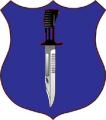First, if you don’t get the “Squirrel!” reference, watch this….
http://www.youtube.com/watch?v=YaAxzIFgNso
I’m doing some research for a paper on the negative impact of technology on the art of planning. In particular, I’m focusing on how “current operations” centers embedded within various command posts have become bright, shiny objects that distract higher-level commanders and others from their roles in leading planning efforts.
I’ve noticed command posts (TOC, COC, JOC, AOC, etc.) have come to look the same over the last 10 years…just at different scales. Walk in any of them and you’ll find rows and rows of positions with multiple flat screen monitors at each…plasma screens on the front wall showing “Pred porn”…and some sort of “battle cab” in the back. The amount of information ingested into these operations centers is enormous….requiring not only dozens of personnel at each location to cope with it, but dozens more to feed them and keep them running.
The advent of blimps and other full motion video assets is compounding the problem…
http://www.strategypage.com/htmw/htintel/20101003.aspx
To make matters worse, there are several programs that are coming down the road that could potentially exacerbate the bias for current over future ops (I won't mention them here). As distant commanders believe they have more influence on the real-time fight because of “enhanced situational awareness and decision making tools,” boundaries of behavior for those actually in the fight are likely to become more narrow. In other words, ROE will likely become even more restrictive. Decision cycles, as a result, are going to grow so that commanders can pursue perfect information in order to make perfect decisions…as if this were ever possible. Lower-level initiative is going to be stifled just at the time it’s needed the most.
Maybe the most troubling aspect of this phenomenon is that the organizational seam between current ops and planning results in bad decisions on the fly. The shift-working current ops crowd hasn’t invested the intellectual capital into the operational environment that the planners have…they are too busy chasing squirrels. So when it’s time to take action, lets say against a high-value target, those directing the action may not understand potential consequences as well as others who have been studying it for a longer period.
That said, to keep from making this more of a doom and gloom discussion, I’d like to look to the crowd for solutions. At the end of the day, technology is a good thing...if we put it in the right context. How do we take the goodness of technology without falling victim to the belief we can “control” the fight? Is there an example of a command post organizational construct where current and future ops (planners) live in harmony? How can technology assist in this regard? My gut tells me the answer may lie in collaborative planning…but there hasn’t been much thought placed into that concept from what I can tell…I could be wrong.







 Staff size should be reduced.
Staff size should be reduced.






Bookmarks